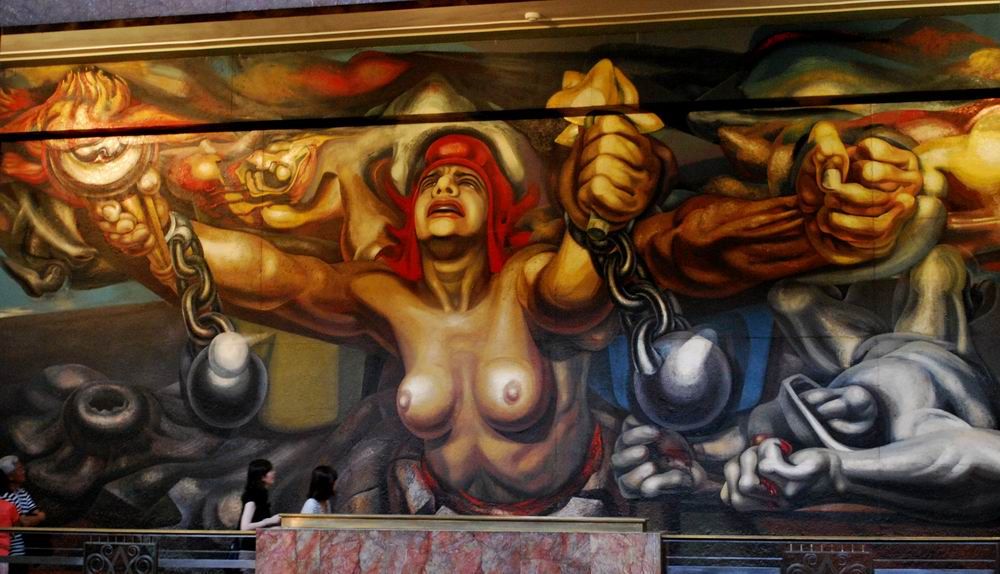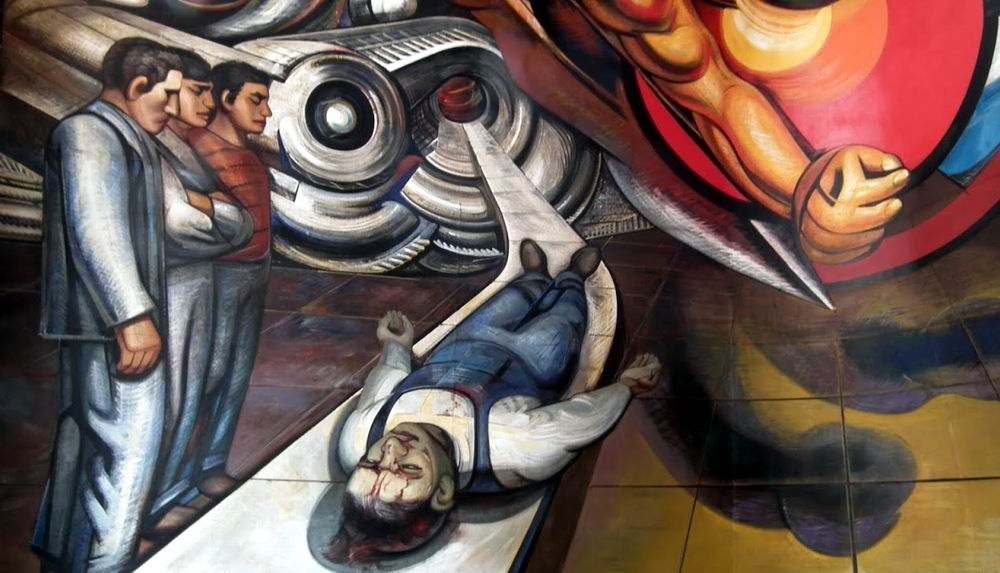History. Acrylic

David Alfaro Siqueiros, "Portrait of the bourgeoisie" (Detail), 1939
The history of acrylic painting
The beginning of this story was laid by Mexican mural artists who began working with synthetic materials from the very beginning of the appearance of these materials. It was in Mexico that scientists were given the state task to invent paints with new unique properties that could be used in monumental painting not only indoors, but also on the facades of buildings. The discovery in the late 20s of the last century of a durable transparent plastic, which is known worldwide as plexiglass and the invention of a method for diluting solid polymer resins with solvents, led to the appearance of the first acrylic paints. But these paints were still very far from modern ones: they were made on the basis of organic solvents that have a pungent smell and negatively affect the preservation of colour. Therefore, they could not gain wide popularity.

DAVID ALFARO SIQUEIRO, "New Democracy" (DETAIL), 1945

DAVID ALFARO SIQUEIRO, "For The Complete Social Security of All Mexicans” (Detail), 1952—1954

David Alfaro Siqueiros, "The March of Humanity"(DETAIL), 1971
And only in the early 60s it was possible to develop water-based acrylic. From that moment on, a new type of paint appeared, which does not need solvents, is quick-drying and durable. These advantages have been appreciated all over the world.
As new generations of artists began their journey, experimented, introduced new ideas and approaches to painting, changed aesthetic standards, acrylic also changed, responding to new demands: the formulation was improved, the palette of colours expanded, new technological standards were developed and introduced. Modern acrylic is a universal paint that gives freedom of creativity without limiting strict rules.
The key characteristics of acrylic that brought him such popularity were versatility, a vivid rich palette of colours, amazing adhesion, water solubility and strength of the coating. Adhesion, the ability of paint particles to cling to any non-greasy surface, freed from the need for a long and complex preparation of the basis for painting, the water solubility and strength of the coating made the workflow comfortable and safe for health, and the result is durable. Versatility, a wide palette of colours and vivid deep shades gave unlimited creative possibilities.
